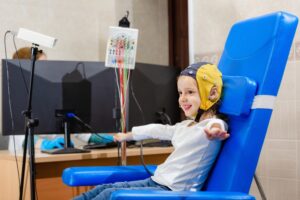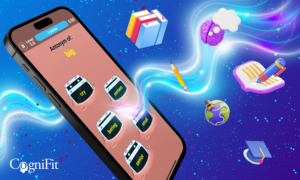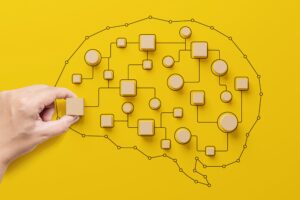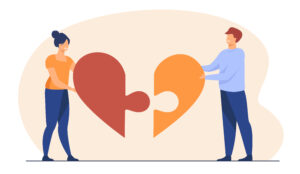
White, Pink Noise Shown to Boost Concentration in Children with ADHD
White and pink noise, often used to aid relaxation and sleep, may also improve focus in children with ADHD, according to a recent study by Oregon Health & Science University. The research suggests that these simple auditory tools could provide a low-cost, non-invasive way to enhance concentration for children struggling with attention issues.

But first let’s understand the difference between white and pink noise.
White noise is a consistent, static-like sound that contains all audible frequencies at equal intensity, often compared to the hum of a fan or TV static.
Pink noise is similar but emphasizes lower frequencies, creating a deeper sound, like rustling leaves or a heartbeat. Both are used to aid concentration, sleep, and relaxation, as they can mask background noise and provide a steady auditory environment. Recent studies suggest these noises can also help improve focus in children, including those with ADHD.
A study conducted by Oregon Health & Science University (OHSU) recently highlighted the potential of white and pink noise to enhance focus in children with ADHD. Published in the Journal of the American Academy of Child & Adolescent Psychiatry, the research reveals that these sound-based interventions can improve task performance in children diagnosed with ADHD. This discovery could provide a low-cost, non-invasive solution to complement existing treatments.
ADHD and Noise Therapy: A Simple Solution
The OHSU researchers analyzed 13 previous studies involving 335 children and young adults. The results were promising: both white and pink noise significantly enhanced focus and cognitive performance in individuals diagnosed with ADHD, while showing slightly negative effects on task performance in those without the condition.
“This is an exciting development,” said Dr. Joel Nigg, lead author of the study. “Although ADHD treatments have advanced, many children still struggle with attention issues not fully addressed by medication or therapy. White and pink noise could offer an easy-to-implement tool to help these children stay focused, especially in distracting environments.”
The concept is that consistent auditory stimuli help the brain filter out distractions—a common challenge for children with ADHD. The steady input from white or pink noise enables children to focus better on tasks even in busy or noisy settings.
An Accessible and Safe Intervention
For parents and educators, the appeal of white and pink noise lies in their accessibility. These sounds can be generated through inexpensive sound machines or mobile apps, making them easy to incorporate into daily routines. Additionally, noise therapy poses minimal risks when properly monitored, although volume levels should be kept low to prevent hearing damage.

The ability to use these sounds alongside traditional ADHD treatments, such as medication or behavioral therapy, makes noise therapy a versatile option. Nigg explained, “White and pink noise can serve as a supplementary tool in an overall ADHD management plan.”
While the results of the OHSU study are promising, the researchers caution that further studies are necessary to determine the optimal duration of exposure and the long-term effects of noise therapy on children’s attention development.
Supporting Evidence from Other Studies
The OHSU study builds on existing research showing that sound-based therapies can improve cognitive function. One notable study titled “Effects of Auditory White Noise Stimulation on Sustained Attention and Response Time Variability” found that white noise significantly improved sustained attention in children with ADHD. This study supports the theory that white noise can help regulate attention by providing a steady auditory input that drowns out distractions.
Additionally, a study conducted by Northwestern University, titled “Pink Noise Boosts Deep Sleep in Mild Cognitive Impairment Patients”, found that pink noise enhanced deep sleep and improved memory recall in older adults with mild cognitive impairment. Though primarily focused on sleep, this study revealed that pink noise’s calming effects may also extend to improved focus and attention in individuals with ADHD. These studies suggest that white and pink noise could form part of a broader toolkit for managing ADHD, offering a non-invasive, drug-free method for helping children stay focused and engaged.
Next Steps for Research
As noise therapy continues to garner interest, Nigg and his team at OHSU are planning additional studies to explore its full potential. Future research will likely focus on comparing the effects of white and pink noise with other sensory interventions, such as light therapy, and testing noise therapy in a more diverse population to ensure broad applicability.
Another key area of research will be determining how long the benefits of noise exposure last. Although the current study focused on short-term improvements in task performance, long-term effects remain unknown. This information will be crucial in developing effective noise therapy protocols.
Practical Benefits for Families
In the meantime, families can experiment with white and pink noise therapy at home. Both are safe, simple to use, and accessible through widely available technologies. While more research is needed to confirm noise therapy’s role in ADHD treatment, early results are encouraging.
For children with ADHD, maintaining focus can be challenging, especially in environments filled with distractions. Tools like white and pink noise may help children improve their concentration and cognitive skills, making everyday tasks, from homework to classroom activities, more manageable.
With ADHD affecting millions of children worldwide, innovations like noise therapy offer hope for more effective, accessible treatments. As research advances, the potential for using sound to improve focus and attention may soon become an essential component of ADHD management.














